Fundamental analysis is one of the methods used to forecast the trends of various financial markets, such as forex, commodities, stocks, and cryptocurrencies.
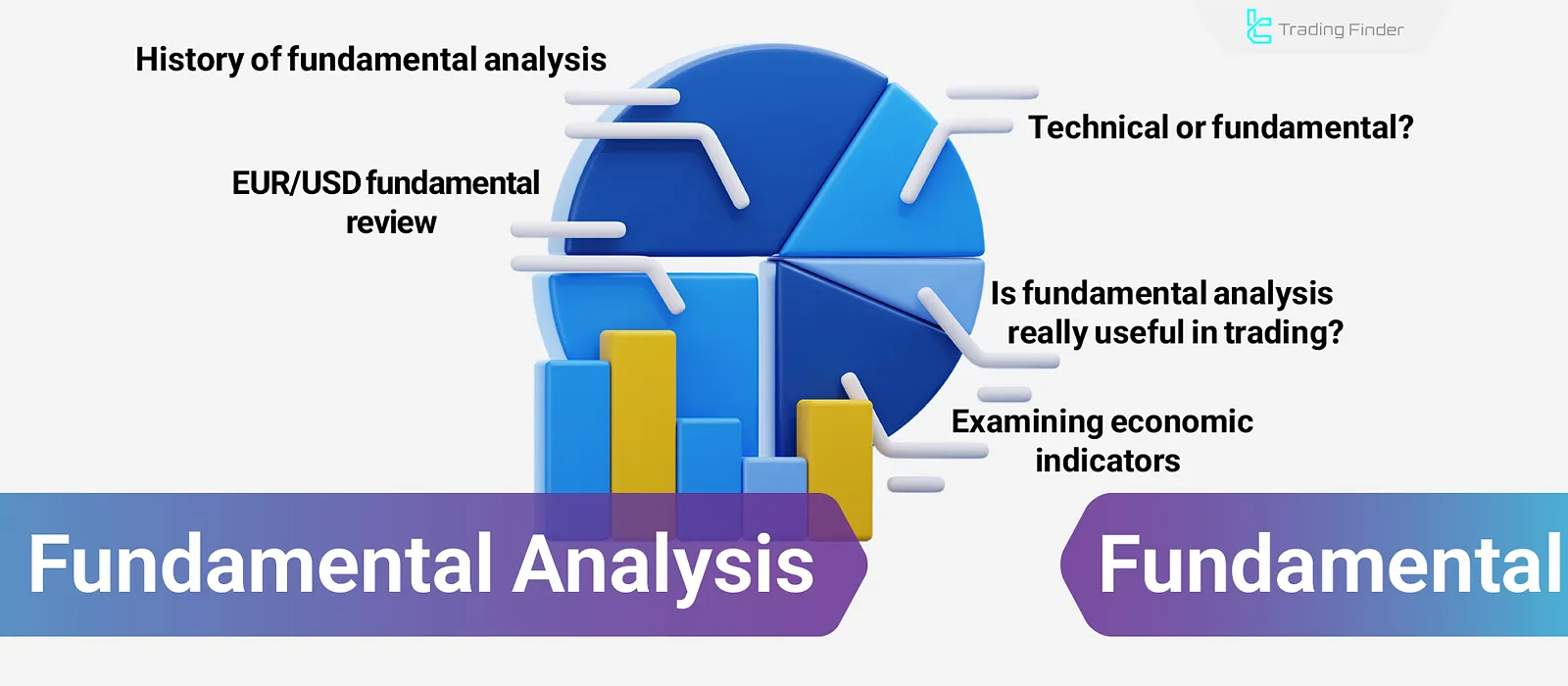
It examines fundamental factors like economic data, central bank meetings, market sentiment, earning reports, and geopolitical risks to identify the mid-term and long-term price trends (Forex, stocks, gold, oil, etc).
What is Fundamental Analysis?
Fundamental Analysis is a method used in financial markets with the aim of identifying the intrinsic value of assets (the true value of an asset based on macroeconomic parameters and fundamental analysis) and predicting mid-term and long-term trends.
History of Fundamental Analysis
The initial idea of fundamental analysis emerged with the rise of classical economics in the 18th and 19th centuries.
Adam Smith, in his book "The Wealth of Nations," first emphasized the concept of intrinsic value and the factors influencing the value of goods and services.
Modern fundamental analysis was introduced in 1934 with the publication of the book “Security Analysis” by Benjamin Graham and David Dodd.
These two university professors developed methods for evaluating the intrinsic value of stocks using financial and economic data.
Fundamental Factors Affecting Assets
Several data points are examined in fundamental analysis, including economic data and market sentiment. Key fundamental factors affecting assets include:
- Economic Data
- Central Bank Meetings
- Income Reports and Financial Statements
- Market Sentiment
- Geopolitical Risks
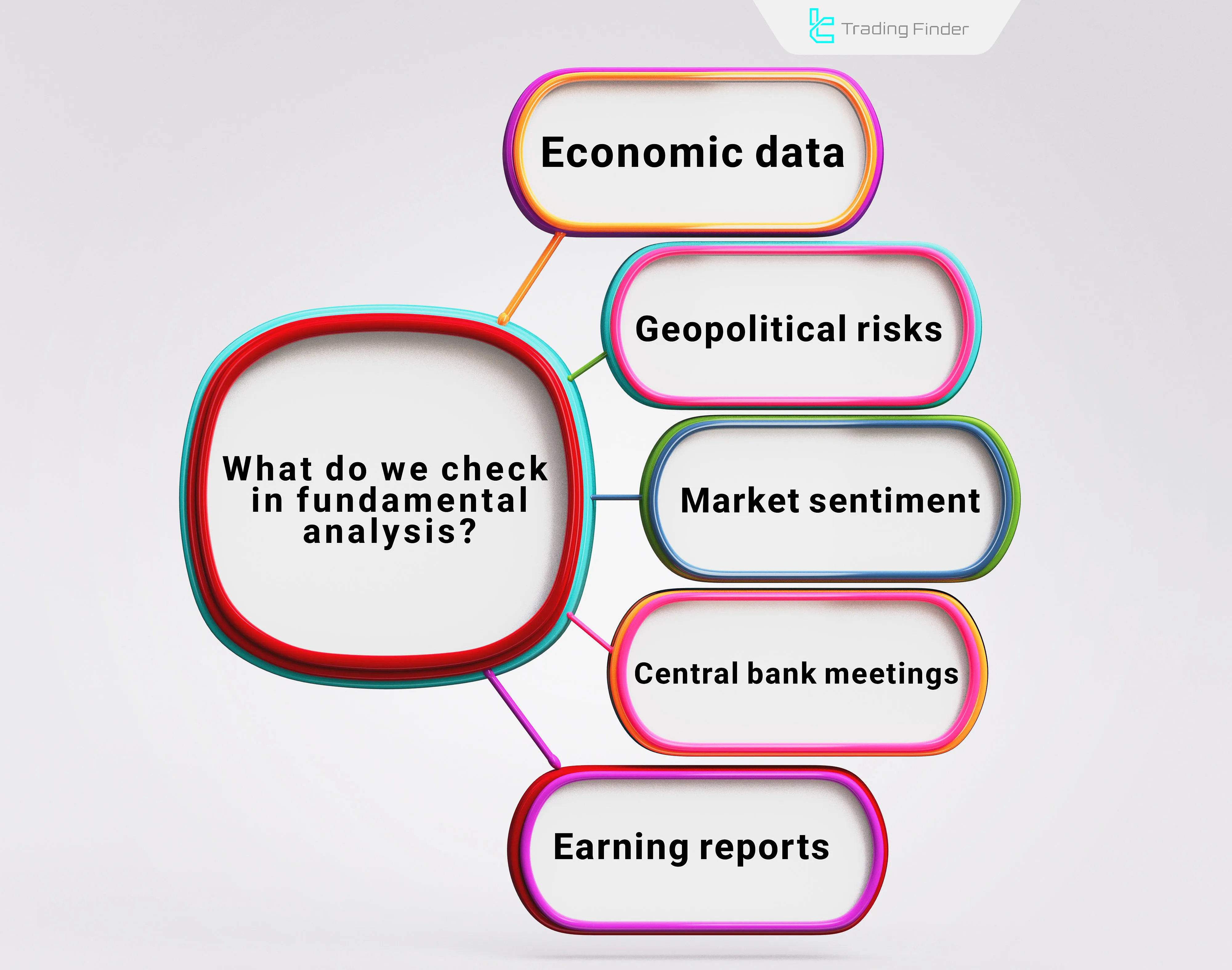
Economic Data
Economic data refers to the reports published on Forex Factory, which can be categorized into three main types: production data, inflation data, and employment data.
Continuously studying and evaluating these reports provide insights into a country's macroeconomic conditions and are helpful for fundamental analysis of forex.
Using economic data, fundamental biases (the bias of an asset based on fundamental parameters) can also be identified for currency pairs.
Central Bank Meetings
Most central banks hold interest rate meetings every six weeks. During these meetings, analysts assess the changes in interest rates, central bank statements, new economic forecasts, and even the tone of the central bank president's speech.
To stay updated on the latest central bank interest rate changes, you can use the Central Bank Interest Rates tool on TradingFinder.
Earning Reports and Financial Statements
Financial statements and Earning reports of companies can be used to predict stock trends and stock indices.
Companies' earnings reports are published quarterly, and to view the results of the reports, you can use the earnings calendar tool of the Trading Finder collection.
The company's performance is measured by comparing actual earnings per share (EPS) with forecasted figures.
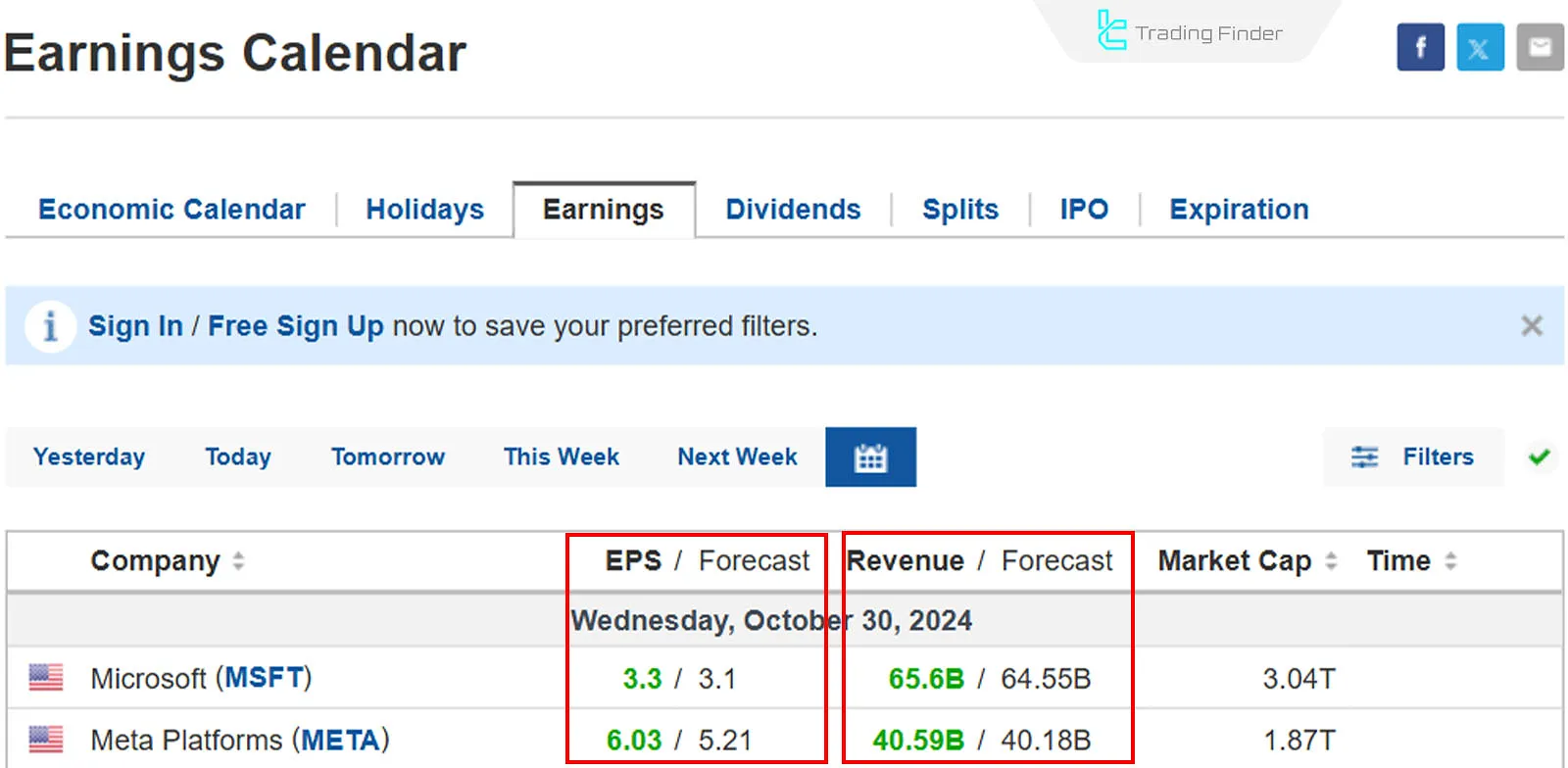
The financial reports of large companies (in terms of market cap) impact the overall market sentiment, and index traders should pay special attention to the reports of these companies.
Market Sentiment
Market sentiment refers to the willingness or reluctance of traders to take risks. In a risk-off market, safe assets like gold, bonds, and low-risk currecies (such as CHF, JPY, and USD) are in demand.
Conversely, in a risk-on market, demand shifts towards riskier assets like stocks, cryptocurrencies, and risk-on currencies (such as AUD, NZD, and CAD).
Geopolitical Risks
Political risks (such as presidential elections) and geopolitical risks (such as wars) are significantly unpredictable.
As geopolitical tensions increase, fear spreads in the market, and it enters a risk-off state. In this case, safe assets become more in demand, while riskier markets face selling pressure.
Application of Fundamental Analysis
By using fundamental analysis and economic data, one can detect the fundamental bias of assets and avoid opening positions contrary to market biases.
Fundamental analysis, by determining the intrinsic value of an asset, helps identify the probability of the price reaching its fair value.
If the current price of an asset is lower than its intrinsic value, a buying opportunity is presented. Conversely, if the price is higher than its intrinsic value, traders can consider selling.
Comparison Between Fundamental and Technical Analysis
Technical analysis examines price charts and price reactions to key levels.
On the other hand, the fundamental analysis draws a comprehensive picture of the asset in question by evaluating financial statements, macroeconomic conditions and market sentiment.
Comparison of fundamental and technical analysis:
Parameters | Fundamental | Technical |
Type of analysis | Focus on fundamental factors and news | Focus on price charts |
Trading horizon | Medium-term and long-term | Mostly short-term trading |
Tools | Financial statements, economic reports, news | Price charts, support and resistance levels, indicators |
Forecasting accuracy | Higher accuracy in predicting long-term trends | Higher accuracy in predicting short-term trends |
Suitable strategies | Swing trading, long-term investing | Scalping |
Can You Trade Using Fundamental Analysis?
A real-life example of fundamental analysis' impact on financial markets will be evaluated. Below is a chart showing the sharp decline of the EUR/USD pair in October 2024.
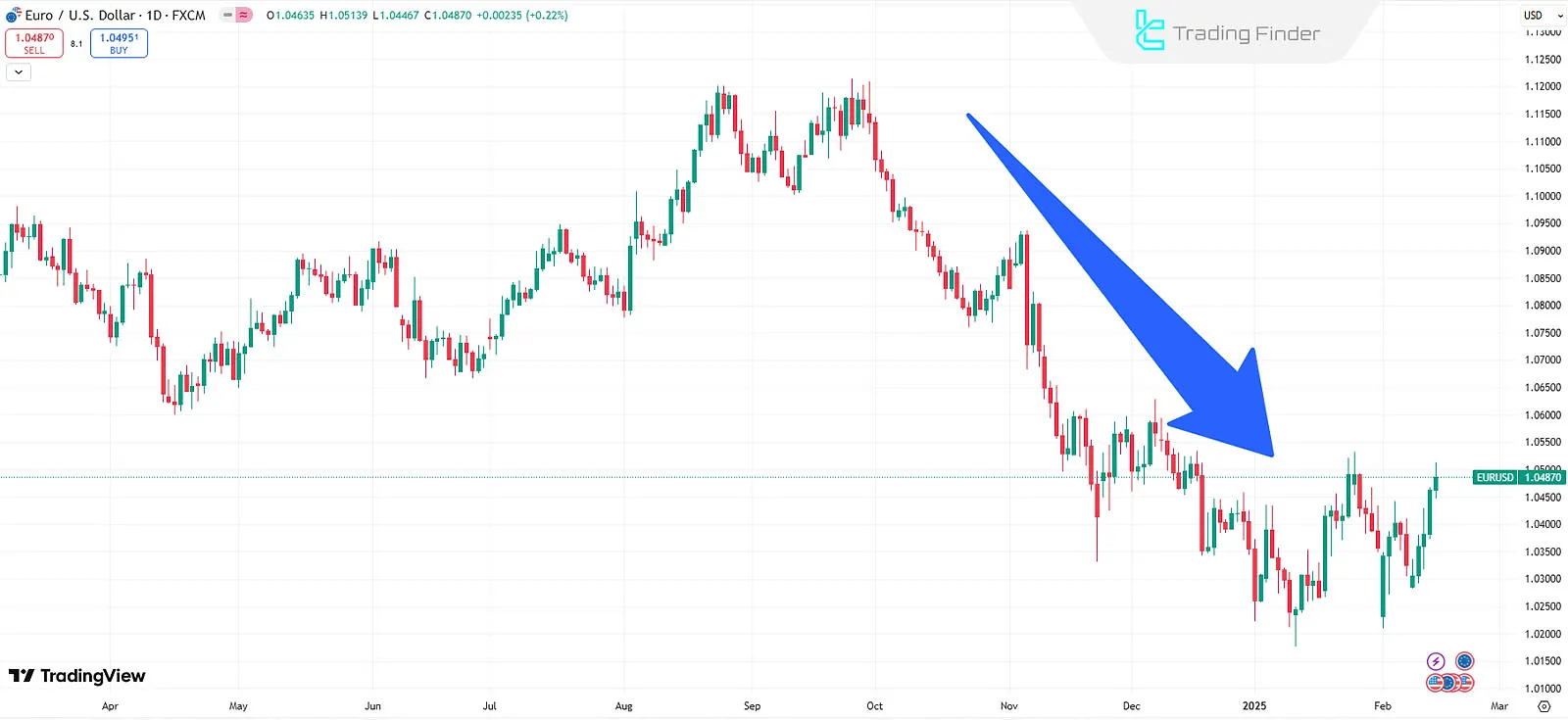
The reason for this decline can be traced back to the severe divergence in monetary policies and economic growth between Europe and the United States.
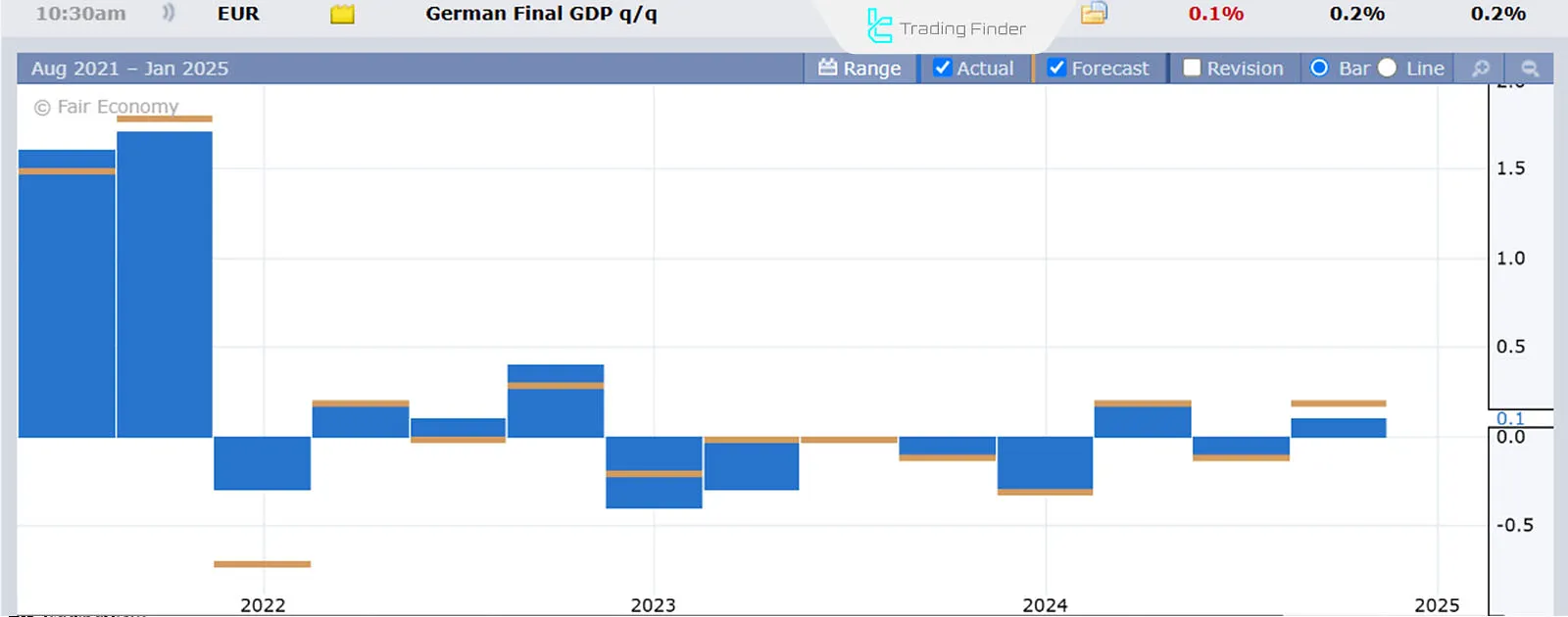
This image shows Germany's weak economic growth from mid-2022 to late 2024. Germany, being the largest economy in Europe, significantly influences the euro.
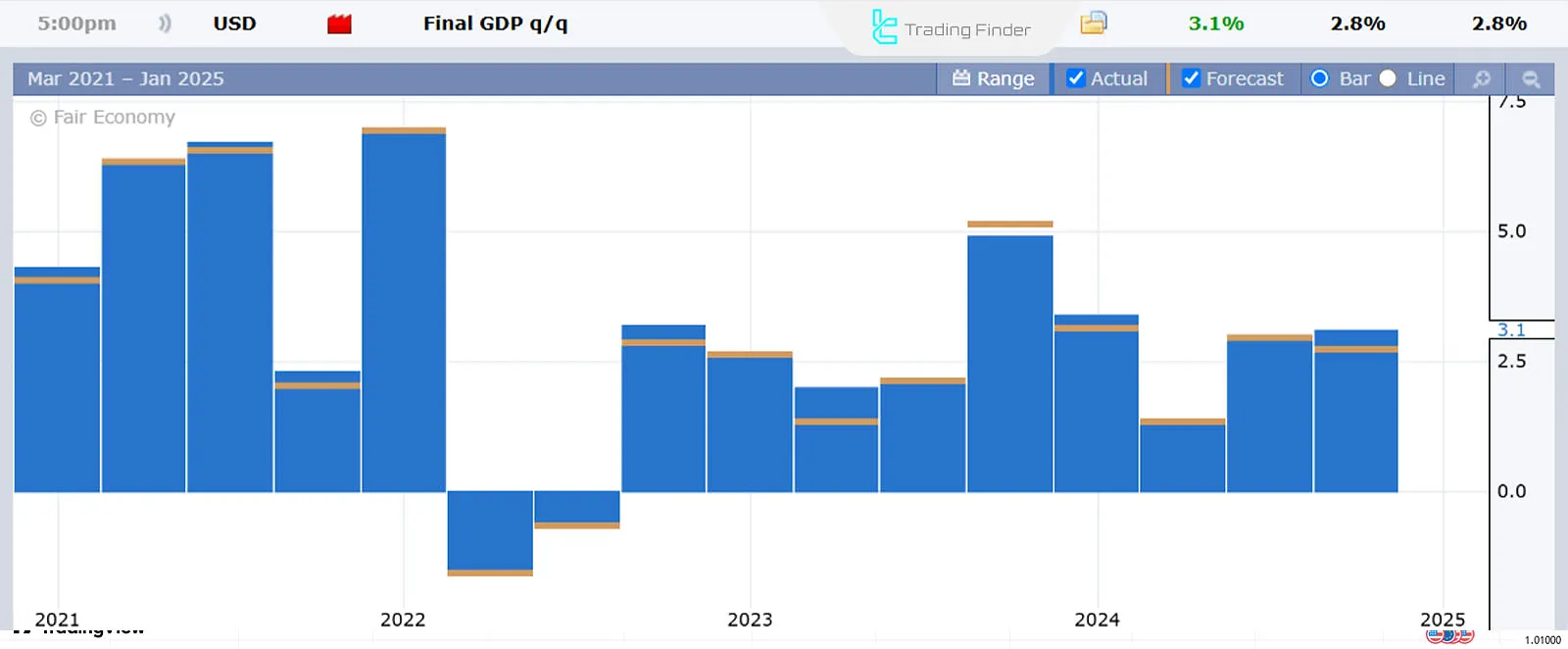
In response to weakening economic growth in Europe, the European Central Bank (ECB) reduced interest rates by 150 basis points (1.5%) from a peak of 4.5%.
In contrast, the U.S. economic data showed strong growth, resulting in inflationary pressures and slower interest rate cuts.
As a result of the monetary policy gap and economic growth in Europe and America, the dollar has strengthened against the euro in the last three months of 2024.
Conclusion
Fundamental analysis is a method used in financial markets to predict price trends by evaluating fundamental factors such as economic reports, central bank meetings, and financial news.
The data analyzed in fundamental analysis is mainly applied to predict mid-term and long-term trends, making it particularly suitable for long-term investors and swing traders.





